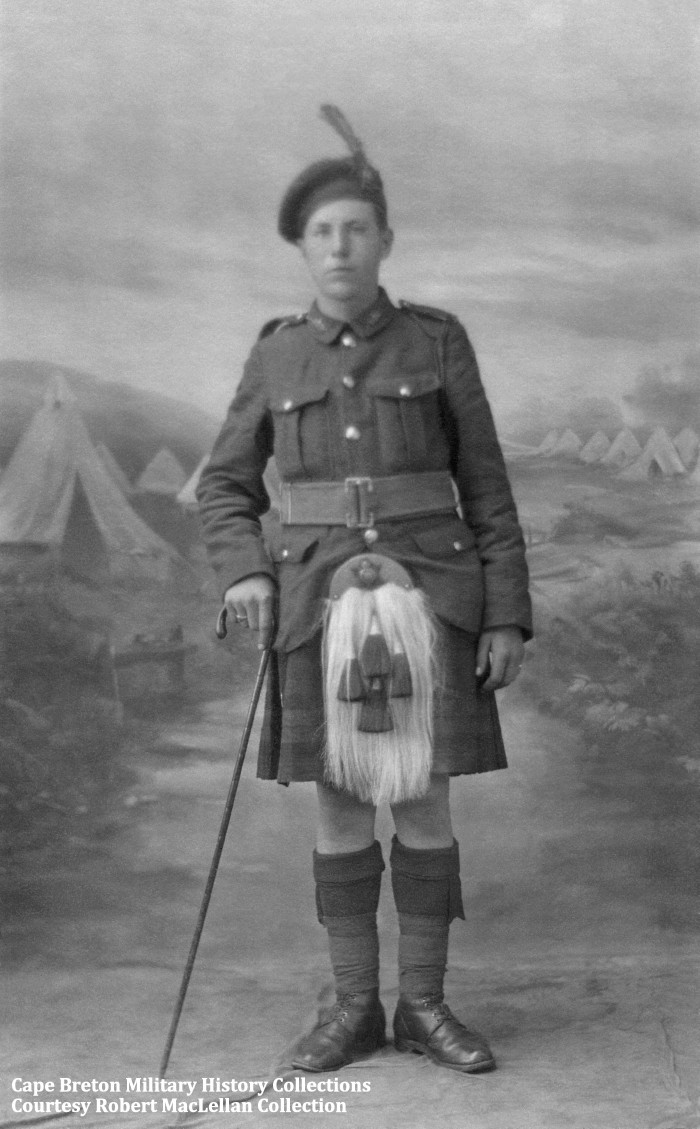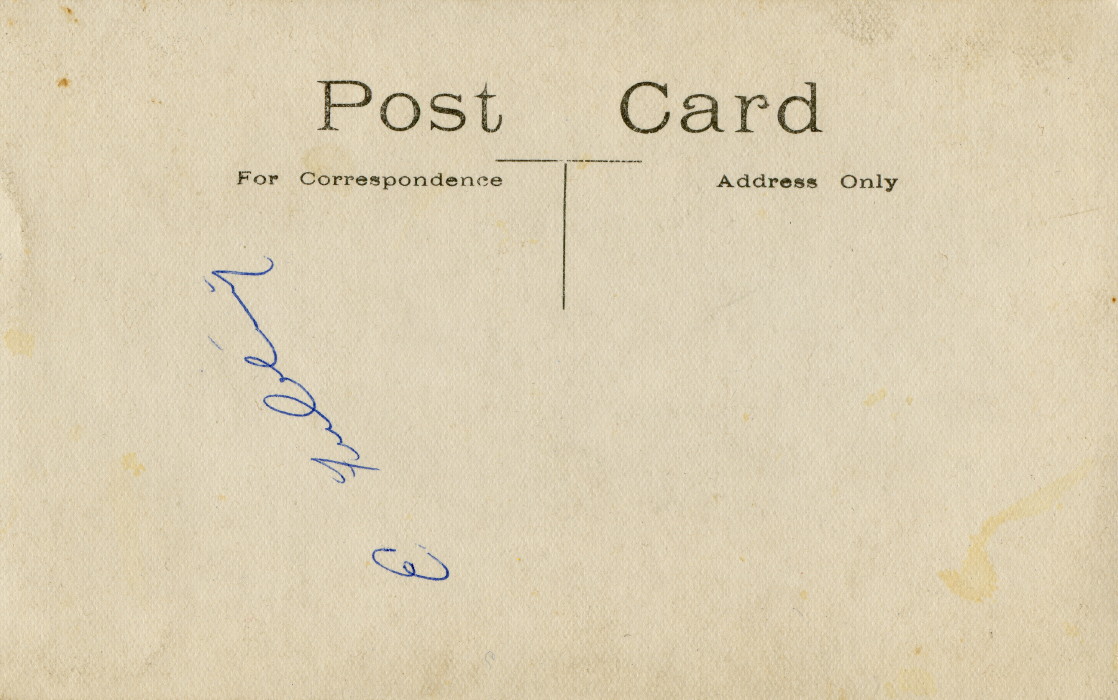Theme Collections
185th Battalion (Cape Breton Highlanders) CEF
Studio Portrait Photos and Personal Profiles - First World War
Photo Postcard
One studio portrait photo postcard of Pte. Edwin Oliver Fielding of the 185th Battalion, England, circa 1917.
Click or tap on the images below for high resolution, expandable images. Use your back button to return to this page.
Pte. Edwin Oliver Fielding
185th Battalion (Cape Breton Highlanders)
England
Circa 1917
Pte. Fielding poses for a studio portrait photo in front of a studio backdrop of a tented encampment. He wears a khaki balmoral with cap badge and full height feathers, a highland cut standard British five button pattern jacket, a 1908 pattern web belt and a kilt. On his legs are khaki hose tops worn with puttees instead of spats. Even though his rank is private, he appears to be wearing an officer pattern sporran and holds a cane. It is believed the cane is a studio prop and it is possible the studio or someone he knew may have let him borrow the sporran for the photo.
Photographer: Unknown
Ref. Number: 0-4 (2-1-3-1.3)
Image Information: Scan of original photo postcard
Source: Robert MacLellan Collection
_________________________________________
Short Biography and Record of Service
Pte. Edwin Oliver Fielding
Service Number 1060209
Edwin Oliver Fielding was born in Truro, NS, on April 27, 1899, the son of William Wilson and Marjorie Ellen (Bartlett) Fielding. On November 22, 1916, at the age of 17, he enlisted as a private in the 246th Battalion (Nova Scotia Highlanders), a reserve battalion for the Nova Scotia Highland Brigade. The 246th Battalion was headquartered in Halifax and later moved to Camp Aldershot, the large prewar military training ground in Aldershot, NS. The 246th Battalion sent two drafts overseas in 1917. Edwin was in the first draft that sailed from Halifax on the RMS Olympic, sister ship of the Titanic, on June 2, 1917.
Upon arrival in England, Edwin was transferred to the 185th Battalion (Cape Breton Highlanders) who were training at Witley Camp in southern England. In early 1918, the 185th Battalion was ordered to be disbanded to provide badly needed reinforcements for Canadian units at the front. As a result, on January 16, 1918, Edwin was posted to the Nova Scotia Regiment Depot and then to the 17th Reserve Battalion on March 1, 1918. On May 7, 1918, Edwin crossed the English Channel to France as a reinforcement for the 85th Battalion (Nova Scotia Highlanders). He joined them in the field a month later. The 85th Battalion had been in France since February, 1917.
In September, 1918, the 85th Battalion was involved in an assault that was part of the Cambrai operations, a general attack on Cambrai and St. Quentin through a section of the Hindenburg Line. On September 29, 1918, the battalion was involved in heavy fighting around a railway in the vicinity of the villages of Sancourt and Blecourt. There were many casualties. It was during the fighting on this day that Edwin was hit in the right thigh which caused a compound fracture of his femur. He was evacuated from the lines and sent back to England for recovery. He spent time there in hospitals before being invalided back to Canada in April, 1919. He was treated at Camp Hill Hospital in Halifax and was discharged from the army on June 6, 1919 as medically unfit.
After the war, Edwin settled in Truro and in 1924 married Mary Lydia Bennicke. Edwin passed away on June 1, 1968 in Truro at the age of 66. He was laid to rest in Watson Cemetery in Salmon River, Colchester County, NS.
In researching Edwin Fielding’s history, there appears to be some discrepancy on his age. His military service files list his date of birth as April 27, 1899 which put him at 17 years old when he enlisted. This was very young but certainly not uncommon. Although the Fielding family does not appear to be listed in earlier census data, the family is listed in the 1921 census. Edwin is recorded as living at home with his parents with his age listed as 20 years old. This would put his date of birth as 1901 or 1902. On the Find a Grave website, Edwin’s date of birth is listed as April 27, 1902 and his headstone also indicates his date of birth as 1902. If this is correct, Edwin may have been as young as 14 when he enlisted.

